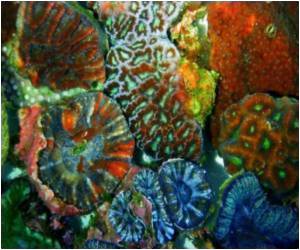A fundamentally new approach to killing cancer cells has been created by scientists.

In conventional chemotherapy treatments for cancer, patients are given drugs that target cell behaviours typical of-but not exclusive to-cancer cells.
A better method is to create drugs that can first distinguish cancer cells from healthy cells and then, once those cells have been spotted, mark them for destruction; in other words, to produce molecules that diagnose cancer cells before eradicating them, said Price.
This type of therapy could do away with the side effects associated with conventional chemotherapy treatments. It also could be tailored on a molecular level to individual cancers, making it uniquely specific.
It employs hairpin-shaped molecules known as small conditional RNAs, which are less than 30 base pairs in length. (An average gene is thousands of base pairs long.)
The researchers' method involves the use of two different varieties of small conditional RNA. One is designed to be complementary to, and thus to bind to, an RNA sequence unique to a particular cancer cell-say, the cells of a glioblastoma, an aggressive brain tumour.
Advertisement
In this way, detection of the RNA cancer marker triggers the self-assembly of a long double-stranded RNA polymer.
Advertisement
If PKR indeed detects long double-stranded RNA within a cell, the protein triggers a cell-death pathway to eliminate the cell.
"The small conditional RNAs trick cancer cells into self-destructing by selectively forming long double-stranded RNA polymers that mimic viral RNA. There is, however, no virus.
"We used three different pairs of small conditional RNAs, with each pair designed to recognize a marker found in one of the three types of cancer.
"The molecules caused a 20- to 100-fold drop in the numbers of cancer cells containing the targeted RNA cancer markers, but no measurable reduction in cells lacking the markers," he said.
The findings appeared in the Proceedings of the National Academy of Sciences (PNAS).
Source-ANI














